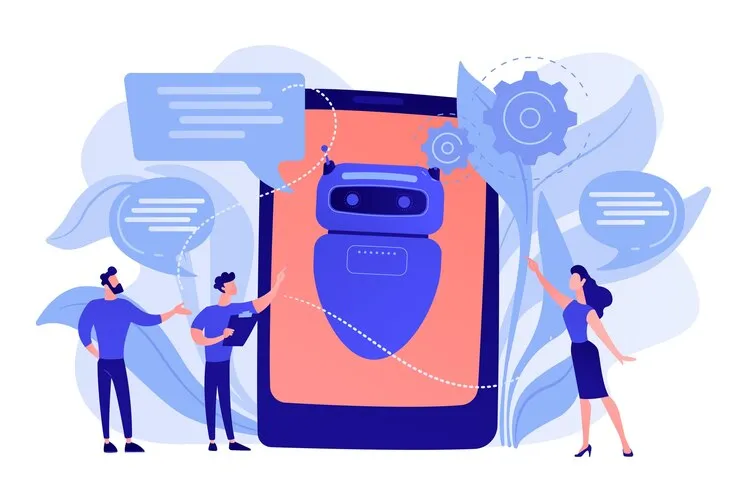A Comprehensive Guide to Creating an AI Chatbot in 2024

The way companies engage with their customers has been completely transformed by the use of AI chatbots. According to projections, the chatbot industry would expand at a compound annual growth rate (CAGR) of 23.3% from USD 5.4 billion in 2023 to USD 15.5 billion by 2028. This extensive book seeks to provide a thorough understanding of AI-based chatbot creation, the advantages it offers enterprises, and the optimal methods for putting AI chatbots into use.
What Is a Chatbot Powered by AI?
An AI-powered chatbot is a clever virtual assistant that uses artificial intelligence (AI) technology, such as:
- machine learning (ML):
- deep learning:
- natural language processing (NLP).
These chatbots may communicate with consumers via voice assistants, social media platforms, messaging applications, websites, and other methods.
AI chatbots are capable of comprehending the context and subtleties of human language, in contrast to conventional rule-based chatbots that depend on a preset set of rules and scripts to create replies. Based on their requirements and preferences, they assess user inputs, ascertain the user's purpose, and provide relevant and customized solutions. Because of this and chatbot development company, users get a more dynamic and interesting experience. All these make AI chatbots a crucial tool for companies trying to boost productivity, enhance customer service, and increase user engagement.
Chatbot Types
Two kinds of chatbots may be distinguished. Let's examine both and see how they work.
Chatbots with Rules
When answering user inquiries, chatbots adhere to predefined guidelines or workflows. Rule-based chatbots, which react to inquiries based on the rules they are taught, are present in all of your basic apps. Take a weather app, for example. When you ask for a prediction, it gathers information from many sources and provides it.
Complex discussions can be too much for rule-based chatbots to handle. It can only do the things that it is designed to do until the creator makes greater advancements.
However, integrating AI for travel has shown how advanced AI can manage intricate queries, making travel planning seamless. This technology allows for real-time updates and personalized recommendations, vastly improving user experience.
Chatbots with a Machine Learning Basis
Machine learning-based chatbots are capable of carrying on longer, more intricate discussions as they attempt to comprehend the topic and its context. It gains the ability to address more difficult inquiries in the future by learning from the prior exchange.

How Can an AI Chatbot Be Created?
Constructing an AI chatbot involves a planned approach that blends state-of-the-art technology with an understated design. With a clear scope and goals in place, you can swiftly build an AI chatbot. Once your scope has been accepted, you must decide which technology will be used to build your chatbot. The procedures for creating an AI chatbot are outlined here for you.
Methodical Scheduling
Determine the purpose, attributes, and intended user base of the bot before starting the procedure. Describe user intents, responses, and decision trees to make sure the bot aligns with corporate goals. This is a fundamental step in creating an AI chatbot that meets demands. You must also learn about the difficulties in developing conversational AI chatbots.
Technology Opting
Select strong Pick open-source options like Rasa or robust AI chatbot development tools like Google's Dialogflow. Make your selection based on factors like scalability, adaptability, and ease of integration with existing systems to streamline the development process.
Dialogue-Based Design
Focus on starting conversations that are engaging and logical. Make sure the persona you choose to represent the brand is coherent and consistent in all of your interactions. Use NLP models to understand context and react appropriately, which will enhance user engagement and experience.
Integration of the Backend
Integrate databases, APIs, and backend systems with the AI chatbot to guarantee that it has access to pertinent data for precise replies. Utilize machine learning methods to improve bot skills over time, expanding its knowledge base and fostering better interactions.
Examining and Streamlining
The bot's effectiveness is ensured by extensive testing in a range of settings. Validate its answers, fix problems, and enhance its functionality based on real-time user input. This is an iterative process that is crucial to improving the AI Chatbot's features.
Conclusion
AI chatbots are becoming a need for companies trying to boost productivity, increase user engagement, and improve customer service. Enterprises may get a competitive advantage by using AI-driven chatbot creation.